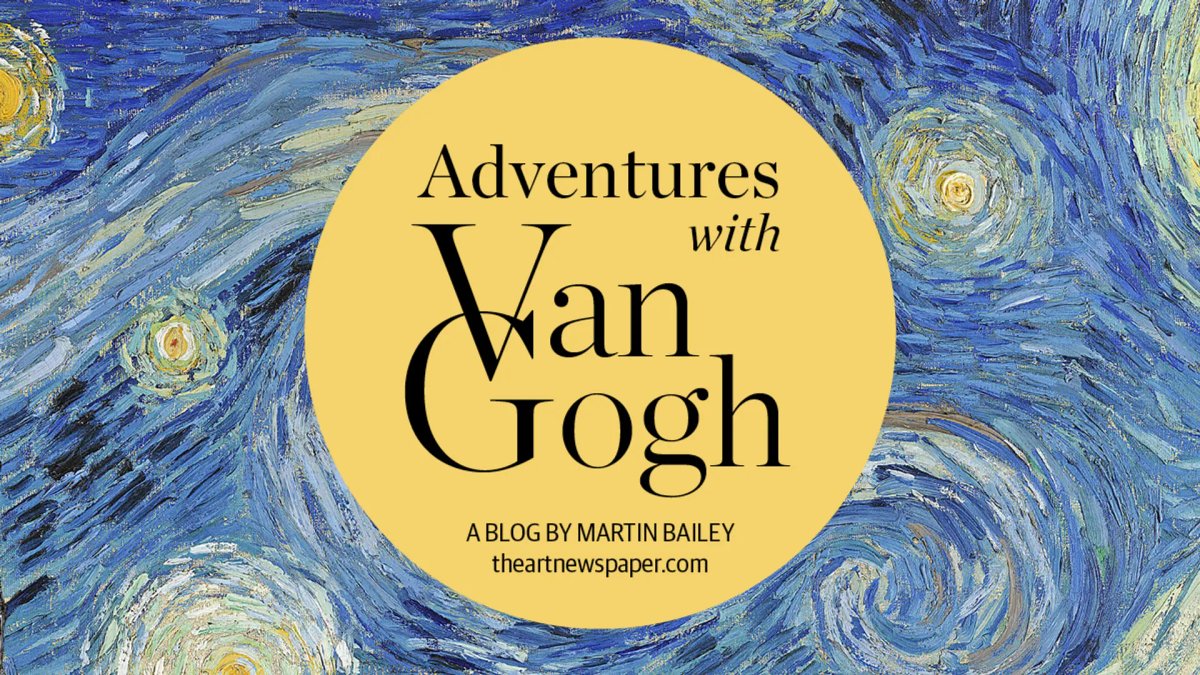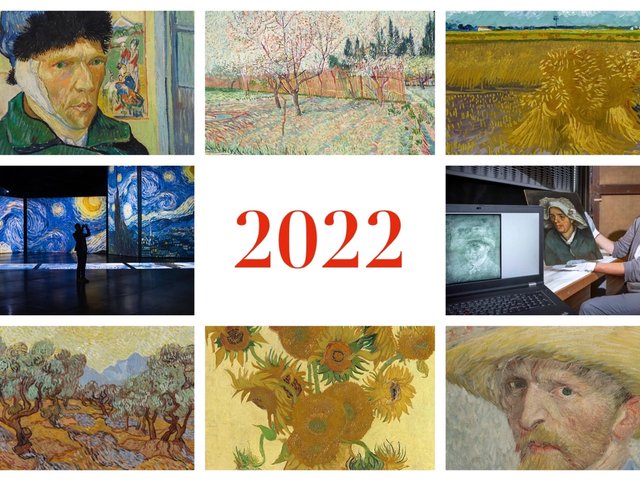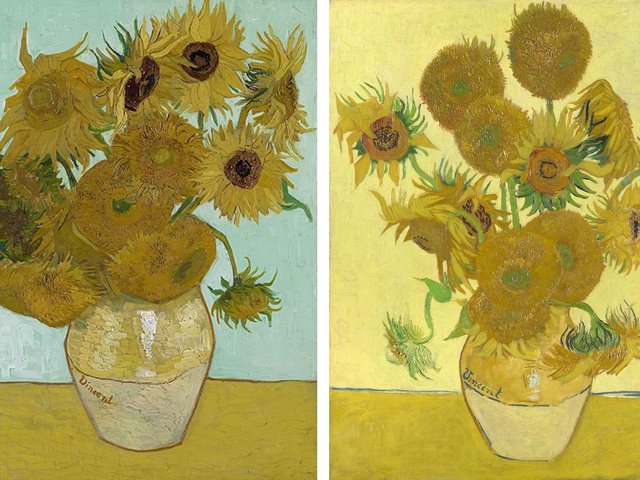When in 2018 I originally started writing my Friday blog, Adventures with Van Gogh, I planned to do it for just a few months. But it has continued, and next week's article will be the 200th post on The Art Newspaper site. There is never a shortage of stories to write on, week after week—something one can’t say about many artists.
So what is it that makes Van Gogh such a phenomenon? Most enthusiasts are interested in both his art and his life, and of course they are closely intertwined. Thanks to his evocative letters, over 800 of which survive, we can delve deep and explore his extraordinary story and how he developed as an artist.
His art is equally fascinating, with his finest works being instantly appealing—but with much more to appreciate if one looks more closely.

Van Gogh's Sunflowers (August 1888) © National Gallery, London
Take the Sunflowers (August 1888, National Gallery, London), one of the most immediately striking images in art. But look more carefully, and the flowers are at different stages of their lifespan: the bud in the lower left, about to burst into life; seven blooms in full flower, their yellow petals aglow; and the other seven dying, having gone to seed. This still life is also a reflection on the passage of time.
People often say to me: surely with such a famous and well-researched artist there can be no more to discover? But that is far from the truth. Search, with a fresh eye, and there is always more.
After 200 posts, which have proved to be most popular? Here are the top ten:
1. Suicide or Murder
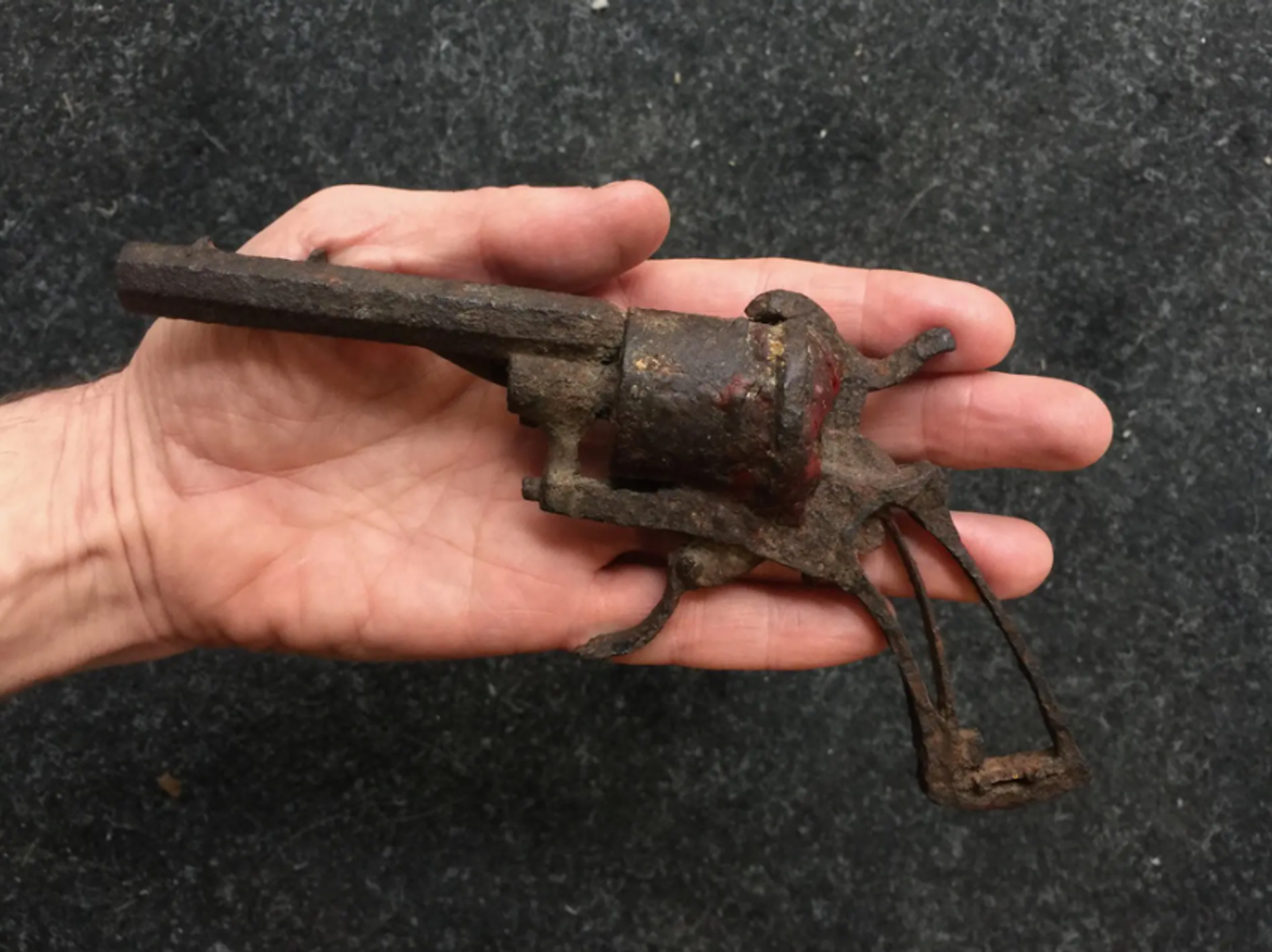
In the author’s hand: A rusted Lefaucheux revolver, dug up in a field at Auvers-sur-Oise and later auctioned in 2019—and believed to be the gun which killed the artist
© Martin Bailey
How did Van Gogh die? This question hit the headlines after the 2011 publication of a biography by two US authors, Steven Naifeh and Gregory White Smith. They claimed that Van Gogh did not shoot himself, but that the shot was fired by a local teenager, René Secrétan.
I never accepted this theory, and remain convinced that it was suicide, posting my thoughts under the headline “Ten reasons why the murder story is a myth”. The discovery of what was probably the very gun used in the shooting, which was auctioned in 2019, adds further weight to the suicide verdict.
2. Not a painting, just a frame
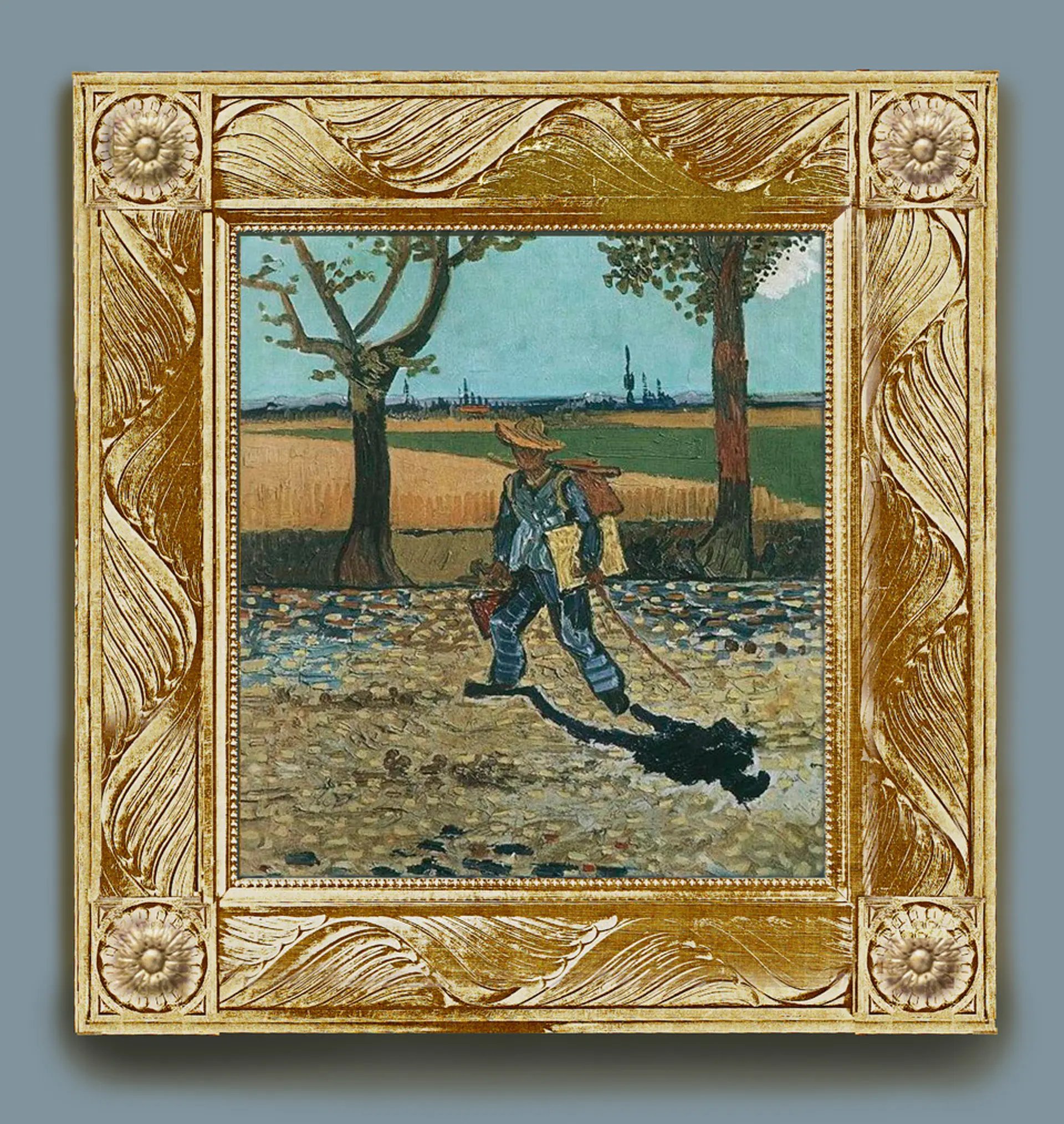
Reconstruction of the destroyed 1910s frame for Van Gogh’s The Artist on the Road to Tarascon (August 1888) at the Magdeburg museum
© Lynn Roberts
The subject of the second most popular post will almost certainly come as a surprise. It was not about a Van Gogh painting—but simply a frame, and one made decades after the artist’s death. The painting itself, The Artist on the Road to Tarascon (August 1888), which was owned by the Magdeburg museum in central Germany, was sadly lost during the Second World and was probably destroyed in a fire deep in a salt mine, where it had been evacuated in order to protect it from Allied bombs.
The elaborate wavy 1910s frame for The Artist on the Road to Tarascon was removed from the painting before it was sent for safekeeping in the mine. The frame was then stored separately and unnecessarily destroyed in 1960, during the communist era in East Germany. From a pre-war black-and-white photograph, Lynn Roberts, a London frame specialist, reconstructed for the blog what it originally would have looked like.
3. A lost Van Gogh, turning up in Japan

Van Gogh’s Meadow, in the Background the New Church and St Jacob’s Church (July 1882)
© Collection of Marunuma Art Park, deposited at the Museum of Modern Art, Saitama, Japan
We all love discoveries, particularly if they turn up in unexpected places. A Van Gogh watercolour landscape, Meadow, in the Background the New Church and St Jacob’s Church (July 1882), had last been recorded in 1903, but it recently re-emerged in Japan. The blog was the first to publish the landscape on the outskirts of The Hague in colour.
4. The most expensive
A feature on the ten Van Gogh paintings that fetched record sums at auction also proved a hit with readers. It is astonishing that the work of an artist who failed to sell during his lifetime should now reach such enormous prices.
5. Three unknown drawings used as a bookmark
A trio of Van Gogh sketches (autumn 1881, now in the Van Gogh Museum, Amsterdam) turned up inside a novel on the French peasantry, where they had been used as a bookmark. They were reproduced for the first time in the blog. Discoveries of totally unknown Van Gogh drawings are now rare—perhaps once or twice in a decade.
6. The scene of Vincent’s final painting
A very early photograph of the scene depicted in Tree Roots (July 1890, Van Gogh Museum) was found. It shows the clump of trees in the village of Auvers-sur-Oise which Van Gogh painted a few hours before he shot himself.
7. Van Gogh’s finest landscape

Van Gogh’s The Harvest (June 1888)
Courtesy of the Van Gogh Museum, Amsterdam (Vincent van Gogh Foundation)
One post attracted readers simply because it is arguably the artist’s most glorious landscape. The Harvest (June 1888) was painted in the countryside just outside Arles. Inspired by the summer scene, Van Gogh completed it in just a single day. On returning from the fields, he complained that “my brain is so tired”—and he relaxed with a stiff drink and smoking his pipe.
8. An unfortunate grasshopper
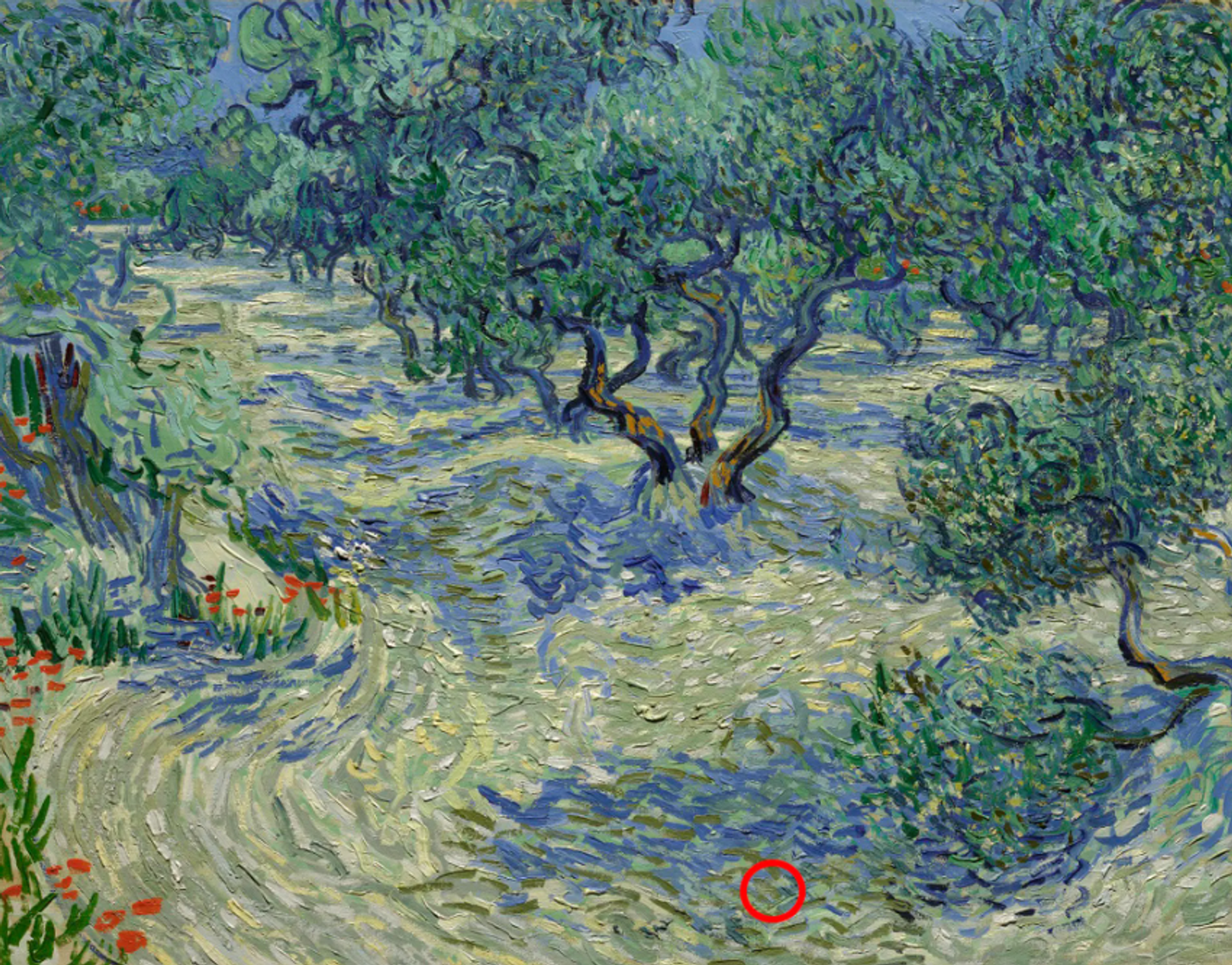
Van Gogh’s Olive Trees (June-September 1889)
Courtesy of the Nelson-Atkins Museum of Art, Kansas City, Missouri
Our readers love art stories about animals, but insects seem to be equally noteworthy when they get caught in Van Gogh’s impasto paint. The remains of a grasshopper were found embedded in Olive Trees (June-September 1889, now at the Nelson Atkins Museum of Art, Kansas City), providing further evidence that this composition was painted outdoors in a grove rather than back in the artist’s studio.
9. Lovers cut out of a larger canvas
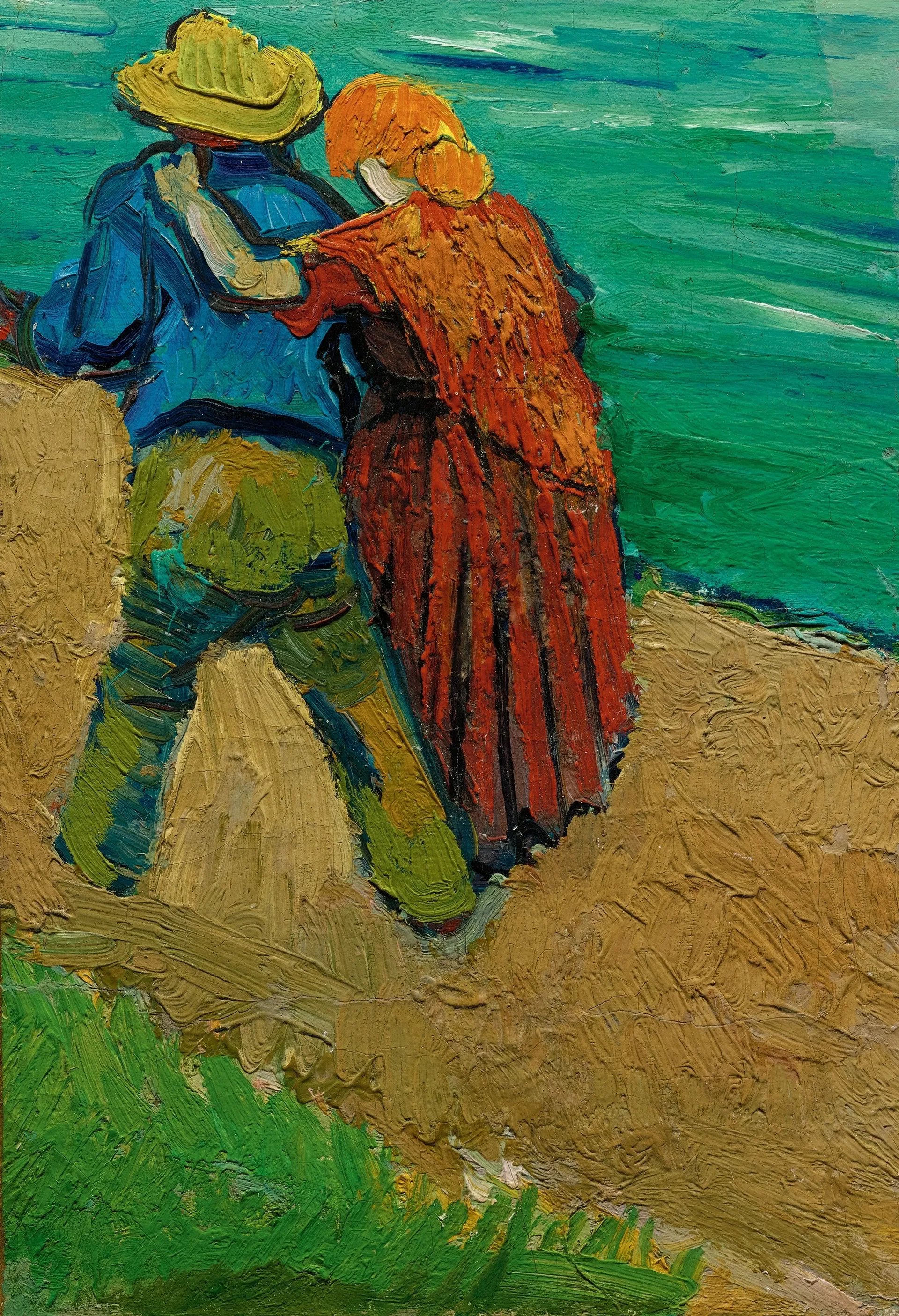
Van Gogh’s A Pair of Lovers (March 1888) Credit: Sotheby’s
Another sales story was about A Pair of Lovers (March 1888, now private collection), a fragment of a larger canvas of an Arles landscape. Van Gogh was disappointed by the landscape, which he destroyed very soon after painting it. But before doing so, he cut out a section of two strolling figures, thinking that it might be a useful study. This small fragment sold for £10m at Sotheby’s in 2022.
10. The Ear
Until the “murder” theory came along, the question that I was asked most often was about Van Gogh’s ear. This may seem a ghoulish matter, but it does relate to the important issue of the artist’s mental state. Despite nearly a century of studies by specialists, no consensus has yet been reached on the nature of Van Gogh’s medical condition.
Inspiration
One of pleasures of writing a blog is to hear from readers. It is particularly rewarding when artists and writers are inspired by Van Gogh’s creativity.
A moving example was an 85-year-old woman from California who wrote from her residential care home, telling me that she had long admired Van Gogh. In November 2020, during prolonged isolation because of Covid-19, she had been confined to her room and decided to make a collage based on a reproduction of Three Sunflowers (August 1888, now in a private collection).
Having enjoyed working on her creation, she then decided to make another Van Gogh-inspired collage every month for the following year. Just before Christmas 2021 she shared what she called her “labour of love” with fellow residents, presenting the collages in a small exhibition in their communal living room—and celebrating with a seasonal drink.

An 85-year-old Californian resident’s interpretation of Van Gogh’s self-portrait, inspired by the original (September 1889) in the National Gallery of Art in Washington, DC Credit: collection of the artist
Finally, I would like to thank Aimee Dawson, The Art Newspaper’s acting digital editor, who edits and lays out the weekly Adventures with Van Gogh with such care and skill.
Other Van Gogh news:
On 3 March, Christie’s is selling a portrait sketch of Van Gogh by Georges Manzama-Pissarro (1871-1961), a son of the Impressionist artist Camille Pissarro. Camille and another son, Lucien, met Van Gogh in 1887 and Georges may have done so too, although this is uncertain. The relatively modest estimate of £5,000-£7,000 for a group of eight drawings, including the one of Van Gogh (as well as other portraits depicting Gauguin, Toulouse-Lautrec and Signac), reflects the fact that they were probably mainly not done from life. The sketch of Van Gogh was most likely completed in the 20th century, also loosely based on the self-portrait (September 1889) now at the National Gallery of Art in Washington, DC.


